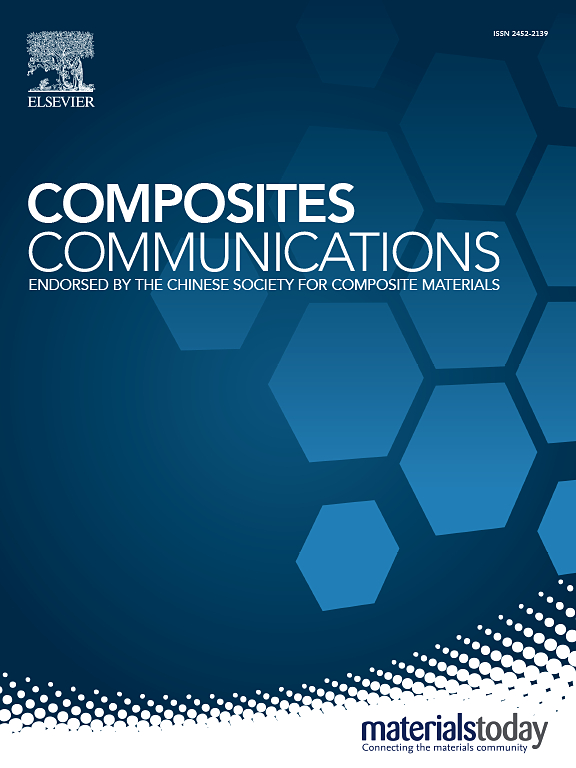Continuous protective layer derived from organic-inorganic hybrid particles: An effective method for thermal degradation resistance and mechanical performance of phthalonitrile composites
IF 6.5
2区 材料科学
Q1 MATERIALS SCIENCE, COMPOSITES
引用次数: 0
Abstract
In order to meet the aerospace applications, a series organic-inorganic hybrid particles (PEB1-3) were prepared by coating polyetherketone-cardo (PEK-C) on the boron powders to improve the thermal degradation resistance of phthalonitrile (PN). A continuous protective layer derived from hybrid particles can form at high temperatures, effectively isolating heat and oxygen. After adding 22.5 wt% PEB2, the temperature of 5 % mass loss (T5%) of PN hybrid resin (PN-PEB2) was significantly delayed from 485 °C to 535 °C. PEB2 exhibited outstanding heat-resistant modification efficiency in PN matrix. In a series of thermal degradation experiments, the surface morphology of PN-PEB2 was mostly maintained after thermal degradation at decomposition temperature. For PN-PEB2 composite, the flexural strength (FS) and interlaminar shear strength (ILSS) were increased by 40.4 % and 44.8 % compared with the PN composite, respectively. After thermal degradation at 350 °C for 100 h, the FS retention rate of PN-PEB2 composite was 67.1 %.
求助全文
约1分钟内获得全文
求助全文
来源期刊

Composites Communications
Materials Science-Ceramics and Composites
CiteScore
12.10
自引率
10.00%
发文量
340
审稿时长
36 days
期刊介绍:
Composites Communications (Compos. Commun.) is a peer-reviewed journal publishing short communications and letters on the latest advances in composites science and technology. With a rapid review and publication process, its goal is to disseminate new knowledge promptly within the composites community. The journal welcomes manuscripts presenting creative concepts and new findings in design, state-of-the-art approaches in processing, synthesis, characterization, and mechanics modeling. In addition to traditional fiber-/particulate-reinforced engineering composites, it encourages submissions on composites with exceptional physical, mechanical, and fracture properties, as well as those with unique functions and significant application potential. This includes biomimetic and bio-inspired composites for biomedical applications, functional nano-composites for thermal management and energy applications, and composites designed for extreme service environments.
 求助内容:
求助内容: 应助结果提醒方式:
应助结果提醒方式:


